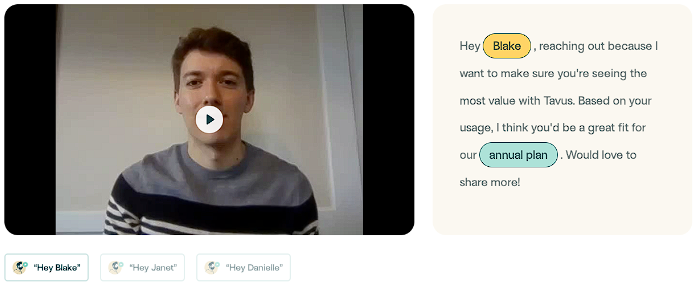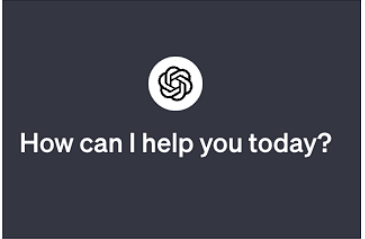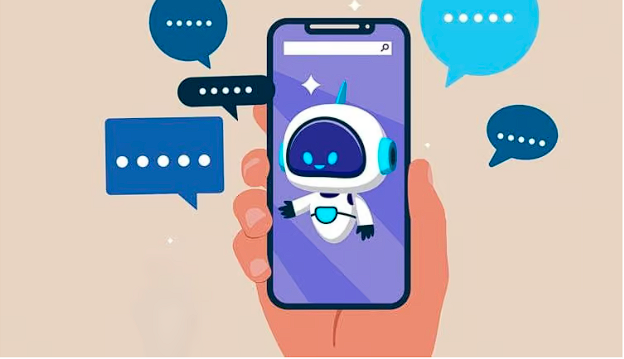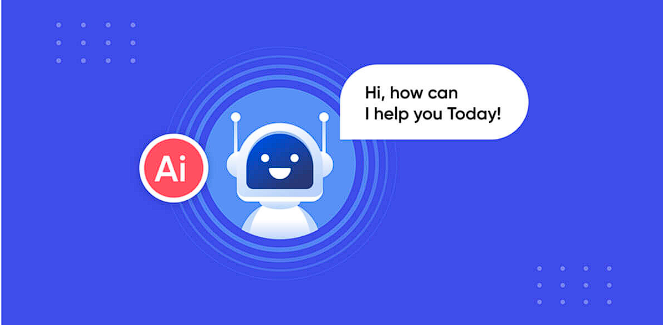All Posts
What is an AI Tool? How Artificial Intelligence Tools Work [2025 Guide]


Artificial intelligence (AI) has a long and complex history, but it’s undeniable that it has evolved from theory into a useful presence across industriesin the last few years. From the dawn of ChatGPT to the dozens of AI tools used in marketing, security, data analysis, and more, AI powers core business functions.
Developers leverage these tools to build smarter platforms, increase user engagement, and automate workflows.The first step in using AI tools effectively is understanding how they work and which ones keep your product competitive and evolve alongside your needs.
AI, or artificial intelligence, refers to a computer system that can perform a task that would otherwise require a human to complete. Recognizing speech, generating written text that follows language structures and responds to tone specifications, making decisions, and solving problems are all examples of AI capabilities.
The purpose of AI is to mimic human cognitive functions through computer systems.
AI uses algorithms and computer models that continuously learn from human inputs and data. These models allow machines to learn and adapt as more data is added. To initiate this process, an AI model must be given a large amount of data so that it can identify trends and pinpoint correlations.
The more data an AI model can work with, the more effectively it can perform.
An AI tool is an application or software program that leverages AI models and algorithms to perform a specified task. Using machine learning techniques and a specialized algorithm developed with a certain goal output in mind, AI tools can help with a wide variety of business needs from customer journey personalization to data analysis and content creation.
AI describes any algorithm or model that adapts and improves with every iteration of its use and every input of data. An AI tool uses that same concept, using machine learning, natural language processing, and computer vision to deliver solutions for a predefined problem.
Humans create AI tools by defining models and entering large amounts of data so that the algorithm can identify patterns and generate its own data that follows those same parameters.
Of course, every AI tool works differently based on its purpose.
There are plenty of reasons why AI tools continue to gain popularity across organizations. The following are some of the most impactful benefits of using AI tools.
AI helps humans to automate processes that are tedious, repetitive, and time consuming. Implementing AI productivity software tools frees up time for individuals and organizations alike, which in turn frees up resources.
No more paying skilled workers to waste their time sorting data or running analytics. Instead, companies can leverage these workers for more high-priority tasks while AI tools complete repetitive tasks.

One AI tool that can save developers countless hours while improving results is Tavus. Tavus helps teams scale personalized video from a single recording and bring real-time, face-to-face AI conversations into their apps via its Conversational Video Interface (CVI).
With Tavus, developers can integrate real-time conversational video and programmatic video generation directly into their apps through white-label APIs. This capability allows application users to follow up with their customers in ways that feel personal—mentioning names, companies, and even specific products—without requiring extra manual effort.
Without Tavus, developers would need to build complex real-time video and generation systems from the ground up, making this degree of personalization and humanlike interaction at scale feel impossible.
By automating tasks that are repetitive and tedious, AI tools allow for increased productivity among employees. This allows organizations to be more strategic in their hiring and task allocation efforts, leaving space for activities that truly move the needle instead of using company resources on administrative tasks that no one enjoys doing.
Because AI tools are always learning from new data and patterns, they are highly adaptable and flexible. This allows them to better complement human skills by inspiring creativity and pinpointing trends before humans may otherwise be able to.
Using machine learning, AI tools can recommend updated models based on shifts in customer behavior and response patterns.
Most people think of ChatGPT or in-depth data analysis functions when discussing AI tool examples. In reality, there are AI tools to assist with almost every business function and decision.
The following examples are some of the most common and impactful AI tools.

How this AI tool works: Traditional AI video generators create outputs by stitching avatars and robotic voiceovers together, which often results in stiff, uncanny experiences. Tavus redefines the category with AI Humans—lifelike, real-time video agents that see, hear, and respond just like people. Powered by proprietary simulation models for face rendering, perception, and turn-taking, Tavus enables face-to-face video interactions at scale, not just canned outputs.
When to use AI video generation:
Why Tavus is different: Instead of static, pre-scripted videos, Tavus lets you spin up an AI human presence directly inside your app. With the Conversational Video Interface (CVI), users can hold natural, back-and-forth conversations or trigger programmatic, personalized video generation. The result is video that doesn’t just “talk at” customers—it builds trust, deepens engagement, and adapts in real time.

How this AI tool works: Instead of dedicating endless hours of skilled work to sift through large sets of data to identify patterns and trends, organizations can input large datasets into AI programs to thoroughly categorize the data. AI data analysis tools can also offer predictive analysis, which can be helpful for a wide range of uses from security to marketing.
When to use AI data analysis:

How this AI tool works: AI writing tools generate human-sounding text using natural language processing programs. Such tools with large datasets to work from can even understand context and nuanced language uses.
When to use AI writing tools:

How this AI tool works: AI image creation tools can process and generate visual data to create new images based on text and image inputs.
When to make AI images:

How this AI tool works: Instead of requiring staff members to complete tedious and repetitive tasks, organizations can use AI to automate workflows in a variety of departments. In many cases, relying on AI for repetitive tasks can even improve accuracy.
When to use AI for workflow automation:

How this AI tool works: AI programs can recognize spoken language and convert it into text. Some tools can take it a step further and analyze text content, creating summaries and key takeaways or rating customer service calls based on a rubric or past data.
When to use speech recognition & analytics:

How this AI tool works: By analyzing past user behavior such as customer purchase history, clicks, searches, and products placed in cart, AI can understand customer preferences and suggest relevant content or products.
When to use AI-powered recommendation engines:

How this AI tool works: AI personal assistants combine language processing abilities with workflow automation and analysis programs to understand user queries and facilitate the desired outcome.
When to use AI personal assistants:

How this AI tool works: AI chatbots use language processing capabilities to converse with website visitors and customers. They provide automated responses to user queries based on company-specific data.
When to use AI chatbots:
The world of AI tools is overwhelming, especially if you’ve been operating without them. Get answers to top questions about AI tools.
AI uses machines to perform tasks that would usually require human intelligence. By learning from data, AI can perform tasks including problem-solving, processing and generating language, interpreting videos and images, recognizing speech, and analyzing data.
Yes, ChatGPT is a generative AI writing tool. It can produce human-like writing based on user prompts.
The best AI tool depends on your specific goals and desired outcomes. For example, someone who needs a free way to generate a summary of their company meeting notes might find that ChatGPT is the best AI tool.
On the other hand, developers looking to integrate personalized video software and real-time, face-to-face AI conversation into their apps with minimal coding effort will find that Tavus is the best AI tool.
Tavus is a research lab pioneering human computing—and a powerful platform for developers. It helps teams scale emotionally intelligent, real-time conversation and personalized video without reinventing their stack.
With Tavus, you can build immersive AI-generated video experiences and real-time, face-to-face interactions in your applications using the Conversational Video Interface (CVI). Users can talk with lifelike AI humans, opening up new possibilities for dynamic interaction.
Stay focused on your core product, while Tavus handles the intricacies of real-time conversational video and AI video generation.
AI capabilities are nearly endless, especially when it comes to video content. Explore even more AI tools to see how this technology can unlock new possibilities for your business and enhance how users enage with your platform.
AI video editors use the predictive and creative powers of AI to help enhance and alter videos that you’ve already recorded. Whether its changing a background, adapting pacing, adjusting colors, or fine-tuning the audio, these tools automate tedious editing tasks to streamline workflows.
Developers can use AI-powered editors to integrate automated video enhancements directly into their applications, improving both user experiences and quality output.
AI video generators can create audiovisual outputs based on text inputs, making them particularly valuable for users who do not want to get behind the camera. While most free AI video generators offer limited capabilities, Tavus provides a powerful free tier for developers to explore its capabilities.
This includes access to conversational video and video generation via API, with a stock AI human library (25 to start), 25 conversational video minutes per month, and 5 minutes of video generation on the free plan. Developers can dive into Tavus for free and experience how easily personalized videos and real-time AI conversations integrate into apps.
Use the Tavus AI video generator.
AI text-to-video generators create video outputs based on text prompts and scripts. These can be useful for organizations that do not need their videos to feature humans or prefer AI-generated avatars to human actors.
Tavus enhances this capability by offering a professionally optimized stock library of HD AI humans, allowing users to input their text prompts and generate lifelike videos effortlessly.
Learn more about Tavus’ text-to-video generator
A talking head video features an animated character lip syncing to text or audio inputs to simulate speech. Tavus allows developers to integrate these into their apps so users feel like they’re engaging with an actual person.
Unlike traditional chatbots, these AI-powered avatars simulate real conversations, creating immersive experiences within your product.
Try Tavus’ talking head video generator here.
AI voice generatos producehuman-like audio outputs. Some programs will use pre-programmed voices, while others like Tavus can use your real voice or default TTS across 30+ languages.
Once you follow the Tavus onboarding process and upload a video template, Tavus will automatically fill in all defined variables with natural-sounding speech that matches the original speaker’s style.
Try the Tavus voice generator here.
AI spokesperson video creators generate videos that feature AI-created avatars or digital clones or real people. These avatars can deliver product education, company updates, and more.
You can use Tavus to create your own AI human spokesperson to communicate with your users, adding a deeper layer of engagement that static chatbots cannot ahieve.
AI script generators process text prompts to create scripts for videos. By giving an AI script generator a detailed prompt with all relevant details and project goals, you can create the perfect script while saving time.
Try an AI script generator here.
Any program that can generate an audiovisual output can be considered an AI video maker. The best AI video maker is Tavus, which developers can leverage to enable users to create thousands of high-quality videos within their platform in the time it takes to record just one. These videos offer custom parameters like language (30+), background, tone, and more, saving even more valuable time for users.
Try the best AI video maker today.
Chat GPT does not have a video generator capability, but can be used in conjunction with tools like Tavus to quickly and easily create thousands of unique videos. Users can use ChatGPT to make video scripts to enter into your app.
Users can record a template and define the variables to create the foundation for thousands of videos.